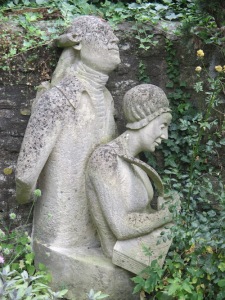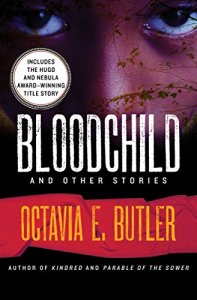“Oh! Who can be ever tired of Bath?” ~ Northanger Abbey
When it comes to Jane Austen novels, my favorite tends to be a tie between Pride and Prejudice and Persuasion. So, when I had the opportunity to travel in England last summer and a family friend suggested I visit Bath if I had the chance, I didn’t take much convincing. The setting for much of Austen’s Northanger Abbey as well, Bath has a long and fascinating history to explore and I got to spend three days doing just that.
The Jane Austen connections were the ones I was most excited about while I was planning my trip. It was easy to locate the Jane Austen Centre and join a tour. They’re not located in any of the houses Jane Austen lived in during her years in Bath, but they do give a wonderfully thorough accounting of Jane Austen’s personal biography, emphasizing her years as a resident of the city and how it influenced her work (most notably how much the city and its reputation had changed from her youth to her adulthood and the ways that can be seen in how it’s portrayed in Northanger Abbey compared to Persuasion).

The Great Octagon connects the Ball Room and the Tea Room at the Assembly Rooms.
Once the presentation introducing the museum ends and we were released into the exhibit itself, it was more than a bit underwhelming (especially for the cost of admission). It proved to be less museum and more recreation. There was a lot of emphasis on the different film adaptations of Austen’s works that were filmed in Bath, which is interesting but not what I was expecting. The centre is aimed more at a specific type of Austen fan—those who enjoy submersing themselves in period costumes and recreating the atmosphere. They boast a Regency tea room (which is separate from the exhibition/museum) and as with the tour hosts, all the staff are in period costume. That particular fan experience is not my cup of tea (I think I’d enjoy myself more at the Jane Austen House Museum in Hampshire so that’s on my list for future visits to the UK).
I enjoyed the actual places mentioned in Austen’s Bath-set novels much more. The Assembly Rooms are impressive and grand to stroll through, but they have more than just the ball rooms. Having skipped the tea room at the Jane Austen Centre earlier in my visit, I indulged myself with a piece of delicious chocolate cake courtesy of the on-site café. The Fashion Museum of Bath is housed in the lower levels of the Assembly Rooms and takes visitors on a self-guided, chronological tour through several hundred years of fashion (I was able to see the special Royal Women exhibit as well, but that won’t be there much longer).

I recommend opting for the self-guided tour of the Roman Baths if you get the chance.
I might not have even realized the Fashion Museum was there were it not for its being included as part of the online saver combo that I purchased when looking to book a tour of the Roman Baths. While the baths themselves don’t feature in Austen’s work, the therapeutic associations of the city and how those came to be, are referenced… Plus I’m a history nerd so of course I was going to tour the baths. Having recently read The Silver Pigs, it made me even more appreciative of having seen the baths in person (even if there was only a brief reference to Bath in that novel). I didn’t have much Roman history in school, and what little I did have didn’t cover the Roman Empire in Britain beyond, “they went there.” Between the Roman Baths and the exhibit at the Museum of London, I had a much better frame of reference for enjoying The Silver Pigs.

A statue of William and Caroline Herschel sits in the garden where they spent their nights mapping the stars.
One last place I visited in Bath that had literary ties for me was one of my favorites: the Herschel Museum of Astronomy. The actual home of William and Caroline Herschel, this small museum was worth every penny. History and science and the history of science fill every nook and cranny of the house and spill into the small garden where the siblings observed and noted the movements of the stars—and where the discovery of Uranus occurred. A few years ago, I read and enjoyed The Stargazer’s Sister, a novelization of the life of Caroline Herschel, much of which took place at that very house.
additional photos
 It’s been a while since I’ve encouraged people to get me books as gifts. Too often I’d wind up with books I already had and/or had already read. A few Christmases back, however, my mom got lucky when she gifted me a copy of Margaret Atwood’s The Heart Goes Last – it was one I didn’t have, hadn’t read, AND by one of my favorite authors. It’s taken me a while to get around to actually reading it (I’m still trying to find the right balance of e-books and hard copies from my massive TBR pile), but as with so much of Atwood’s work I found it a little odd, quite enjoyable, and thoroughly thought provoking.
It’s been a while since I’ve encouraged people to get me books as gifts. Too often I’d wind up with books I already had and/or had already read. A few Christmases back, however, my mom got lucky when she gifted me a copy of Margaret Atwood’s The Heart Goes Last – it was one I didn’t have, hadn’t read, AND by one of my favorite authors. It’s taken me a while to get around to actually reading it (I’m still trying to find the right balance of e-books and hard copies from my massive TBR pile), but as with so much of Atwood’s work I found it a little odd, quite enjoyable, and thoroughly thought provoking. I’ve been a fan of Roshani Chokshi since I first read
I’ve been a fan of Roshani Chokshi since I first read  After devouring
After devouring 































 The house and gardens are now open from May through October with a number of events and shows in the evenings during the summer. The Mount can be booked for weddings and other events as well. Some of the rooms, like Edith Wharton’s bedroom and library, have been refurbished with period furniture while others, many of the guest rooms upstairs included, contain exhibits about her life (especially the time she spent in France and her contributions to supporting the troops during the first world war). The wooded walk from the stables to the main house, aside from just being gorgeous, is also spotted with modern art sculptures. I could have spent the whole day wandering through the forest trails with their myrtle carpets and the sun streaming through the leaves.
The house and gardens are now open from May through October with a number of events and shows in the evenings during the summer. The Mount can be booked for weddings and other events as well. Some of the rooms, like Edith Wharton’s bedroom and library, have been refurbished with period furniture while others, many of the guest rooms upstairs included, contain exhibits about her life (especially the time she spent in France and her contributions to supporting the troops during the first world war). The wooded walk from the stables to the main house, aside from just being gorgeous, is also spotted with modern art sculptures. I could have spent the whole day wandering through the forest trails with their myrtle carpets and the sun streaming through the leaves. Additional photos
Additional photos
